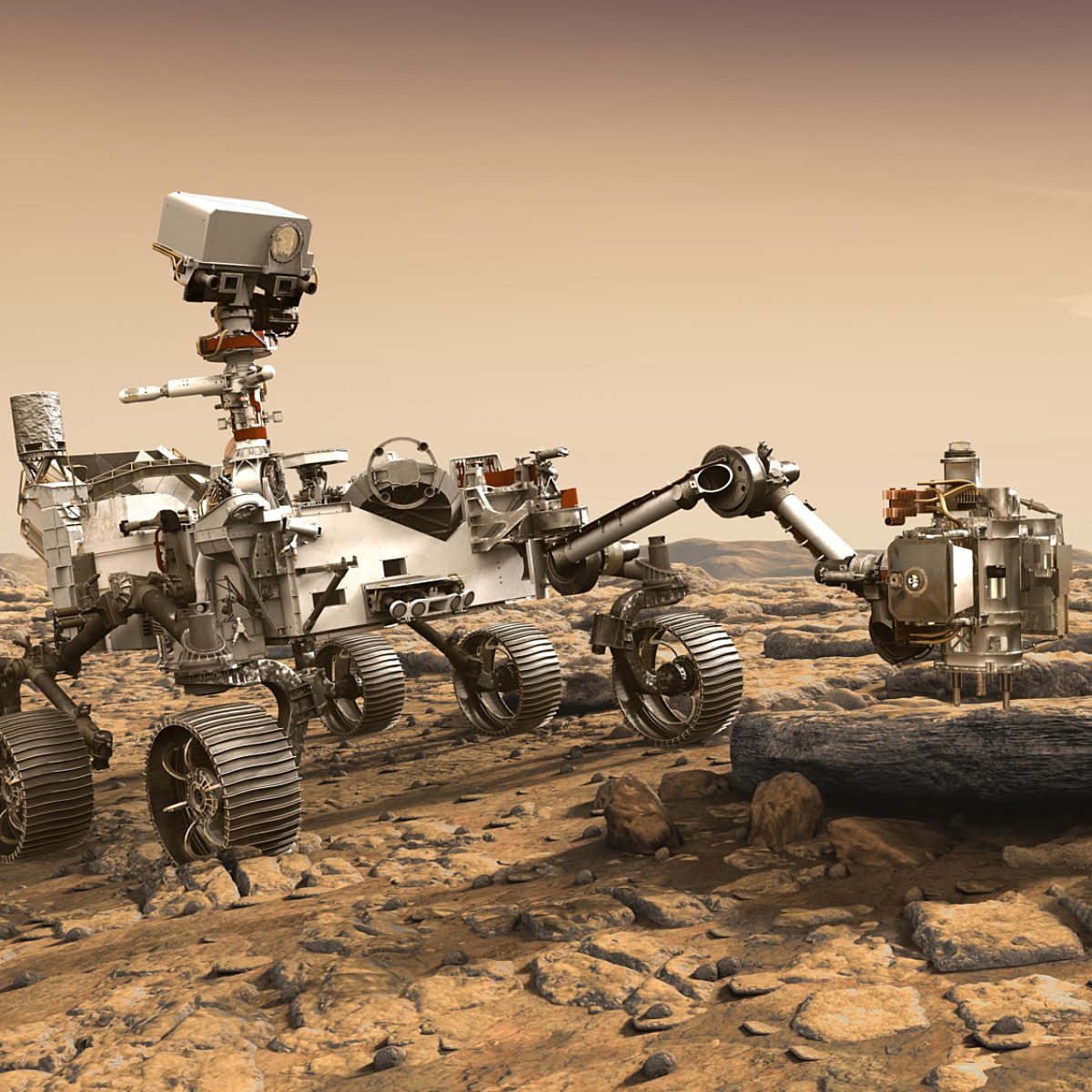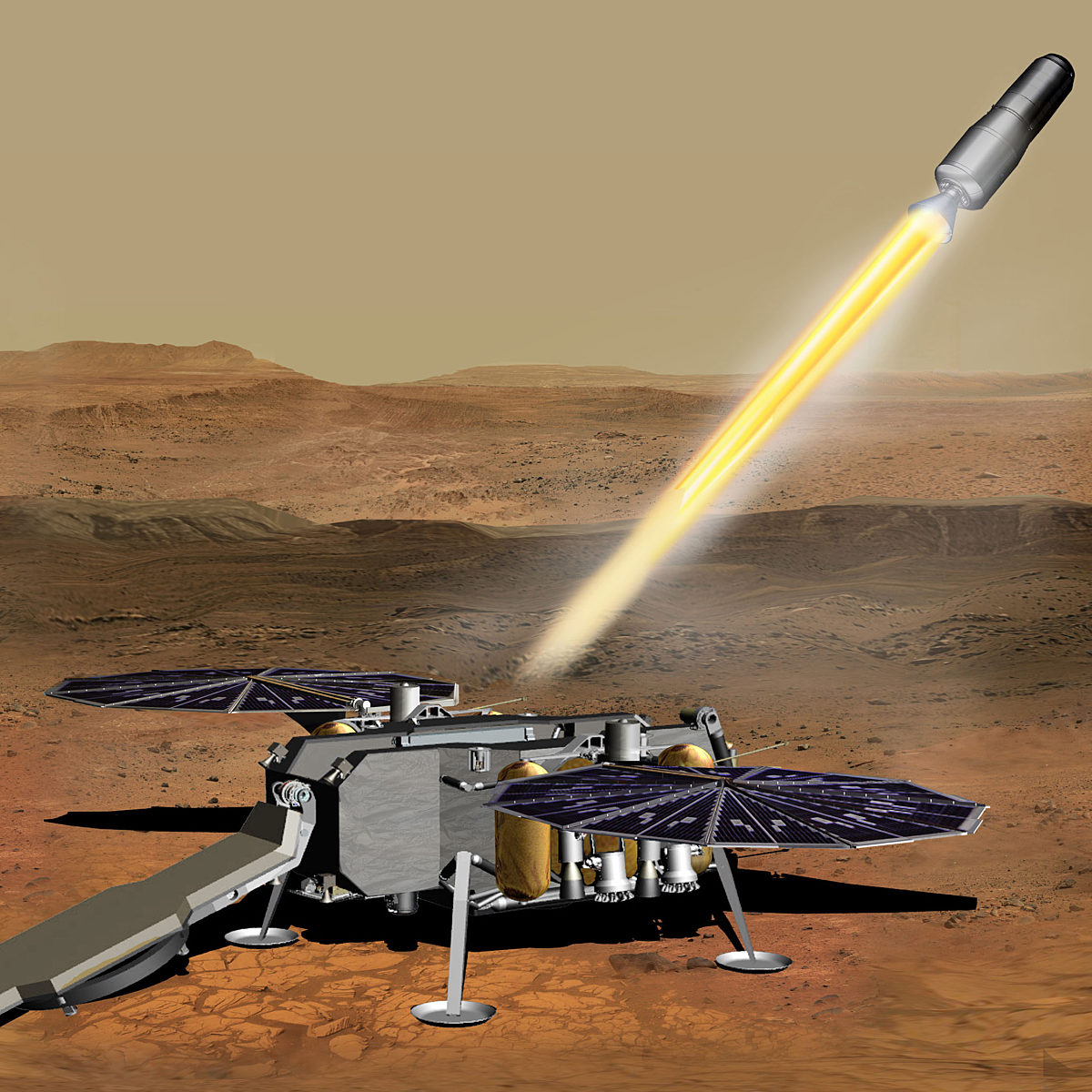Sample Return Roundup
3 Countries and 4 Missions to Return Samples From Space
It's a banner year for sample return missions. Not since the 1970s has there been so much invested in returning rocks to Earth from space. This year, China, Japan, and the United States will all have sample return missions in flight, seeking to retrieve material from near-Earth asteroids, the Moon, and eventually Mars.
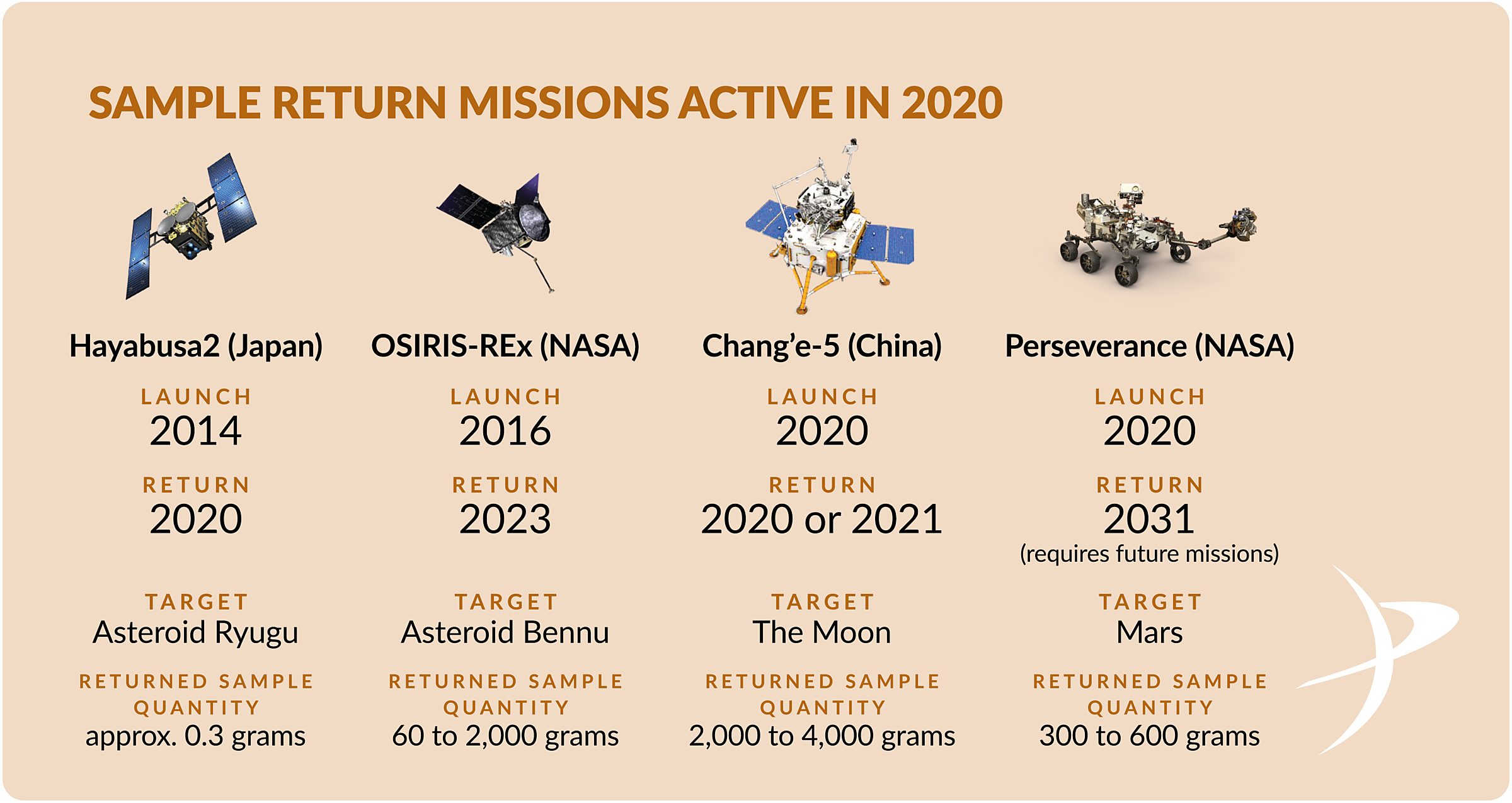
Why Sample Return?
The capability of autonomous deep-space robots advances by leaps and bounds every decade, so why is it still necessary to study samples back here on Earth? There are 3 main reasons. First, many important types of laboratory analysis cannot yet be performed in space or can’t be done very precisely. Scientists would like to analyze elemental and isotopic composition to determine the origin and ages of rocks. Neither of these types of analyses can be performed off Earth because the necessary instruments can’t yet be built small enough, robust enough, and with low enough power requirements for spaceflight.
Second, samples would permit scientists to attempt to reproduce others’ results. Reproducibility is a core element of the scientific method; the more surprising a result, the more important it is to demonstrate its reproducibility. However, analyses performed in space by a single instrument on a single spacecraft are not reproducible. NASA’s Perseverance rover, which launches to Mars in late July or early August, will be attempting to find biosignatures in Martian rocks, but it’s not possible to prove beyond a reasonable doubt the existence of life on Mars without the experiment being reproduced by more than 1 instrument in more than 1 laboratory.
Third, having the materials on Earth means that in the decades to come—as scientists develop new questions to ask, new experiments to run, and new analysis techniques—sampled material will still be available for investigation. The U.S. Apollo and Soviet Luna samples from the 1960s and ’70s are still producing valuable science more than 50 years after the last rock was collected from the Moon.
Sampling Asteroids
Japan’s Hayabusa2 mission collected samples from asteroid Ryugu on 22 February and 11 July 2019, storing each sample in separate chambers. The mission team believes it collected at least 300 milligrams of material and likely more. Hayabusa2 is now on its way back to Earth with its precious cargo, on course for a landing in the Australian desert in late 2020.
Based on images returned by Hayabusa2’s German-built MASCOT lander, scientists believe that the sample canister will contain material and possibly gases preserved since the early days of the solar system, condensed from the dusty disk that eventually became the planets. Scientists will compare the chemical composition of the samples with Earth and Moon rocks, seeking to understand factors about Earth’s origin, such as whether asteroids played a role in bringing water to Earth.
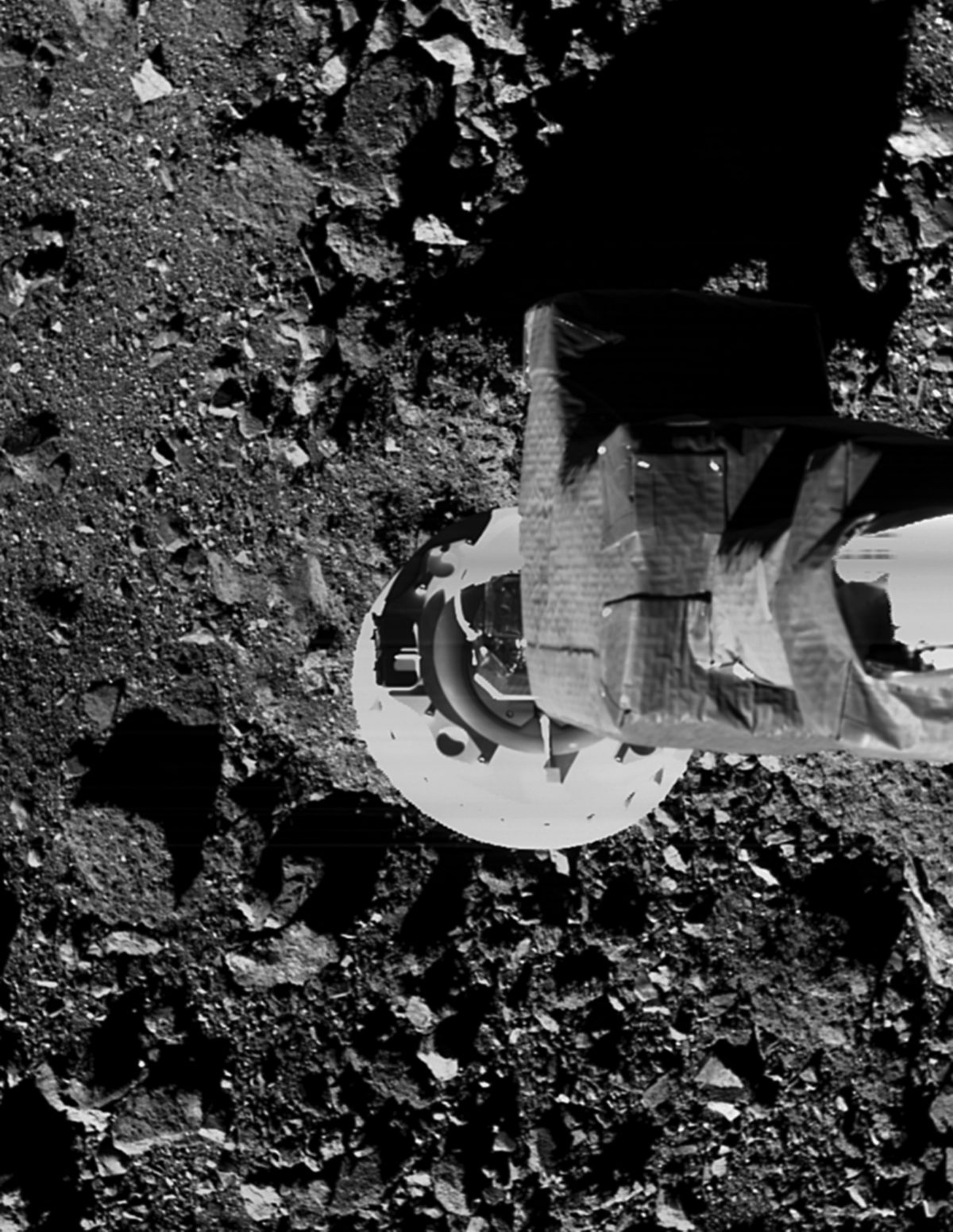
Meanwhile, at asteroid Bennu, OSIRIS-REx is performing low overflights of its selected touchdown site. The overflights will produce a detailed set of maps for the spacecraft to use as it autonomously collects a sample in late August. Superficially, Bennu looks similar to Ryugu; it will be fascinating to finally see Bennu up close to compare its surface with Ryugu’s. The real payoff will come when the samples are returned to Earth and scientists can compare them with the ones returned from Hayabusa2. Both Ryugu and Bennu are carbon-rich asteroids, and carbon is a key ingredient for life as we know it. Will they tell the same story about the formation of the solar system, or will their tales be different and confusing, upending our predictions? Only time will tell. OSIRIS-REx’s samples will land in Utah in 2023.
Why Sample the Moon Again?
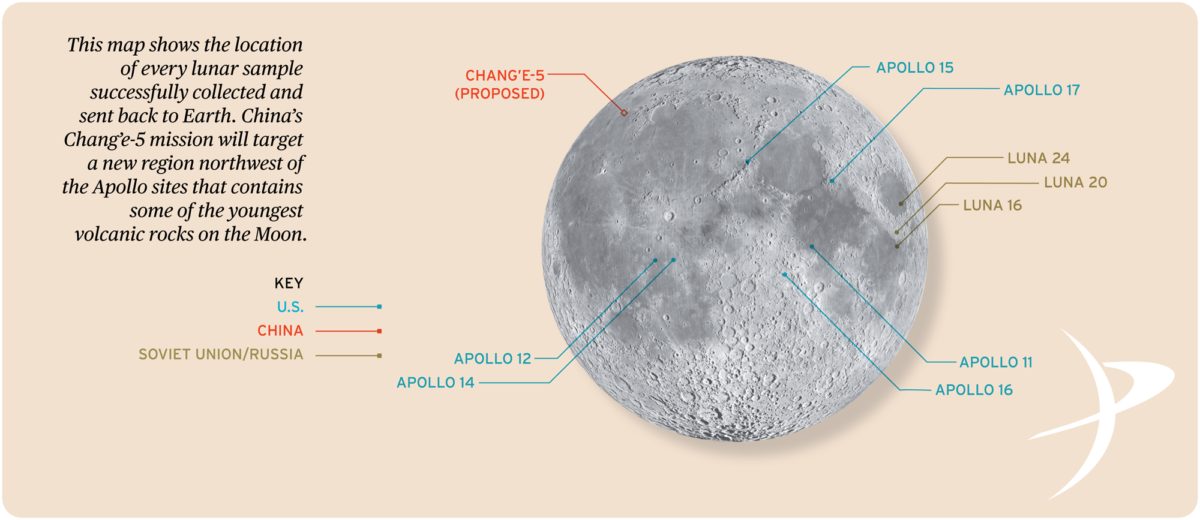
We already have 382 kilograms (842 pounds) of lunar material brought back by Apollo astronauts, so why do we need more? The main reason is that the samples we have aren’t representative of the whole Moon and cannot provide clues to some very important mysteries.
The Apollo missions had severe restrictions on where they could land because safely returning the heavy, human-rated ships back to Earth required near-equatorial, nearside landing sites. To better understand lunar chronology, we need to return samples from a wider variety of locations.
China’s Chang’e-5 sample return mission, planned for launch at the end of this year, will land in Oceanus Procellarum, far north and west of all the Apollo sites in a region where more recent lava flows covered up the material from the Imbrium impact. Procellarum is one of the lunar science community’s highest-priority targets for future sampling because it contains some of the youngest volcanic rocks on the Moon.
The impact history of the inner solar system is best recorded on the Moon, which makes it the standard by which we try to measure time on other planets. Thus, obtaining a sample from Procellarum and pinning a number to the youngest of the Moon’s large lava flows will help us establish the timing of similar events on Mercury, Earth, and Mars.
Finally, Mars Sample Return
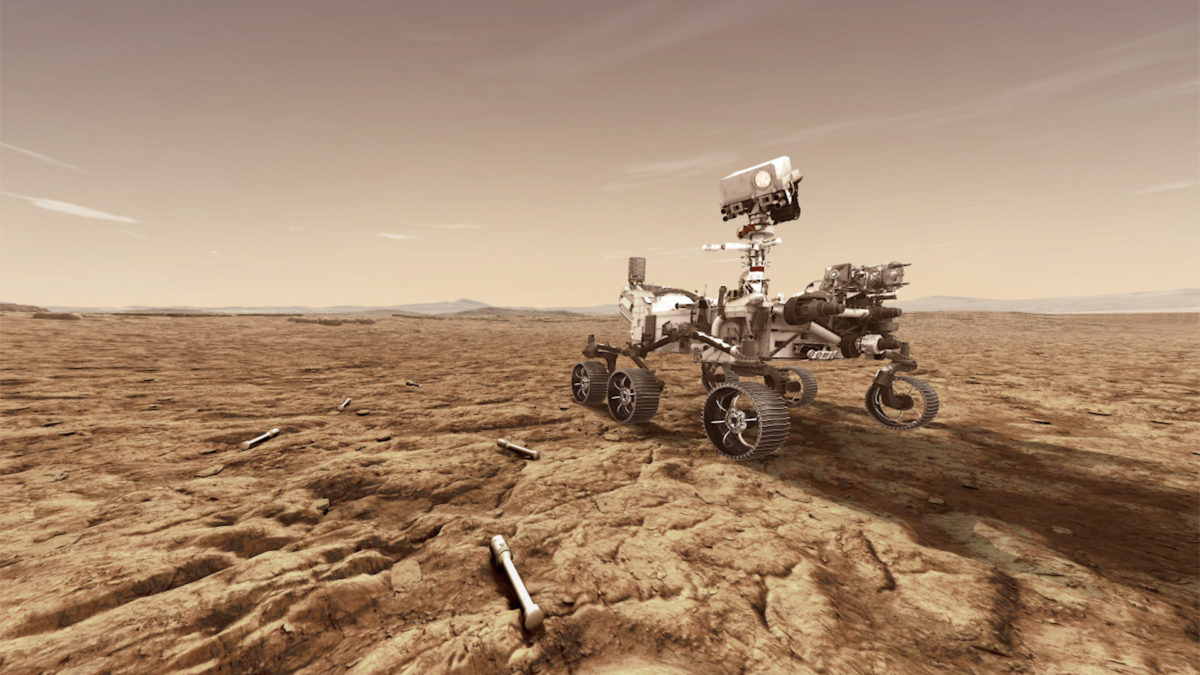
NASA’s Perseverance rover, launching this summer, will drill for Martian samples and store them in hermetically sealed tubes for later retrieval. NASA and the European Space Agency (ESA) have scoped out a pair of future missions to go to Mars and bring back the samples.
Perseverance, NASA's newest Mars rover
NASA's Perseverance rover is searching for past life on Mars and collecting samples for future return to Earth.
Perseverance will collect samples from inside Jezero crater. Billions of years ago, a lake pooled within Jezero. The lake was filled by a river that built a fan-shaped deposit of sediment, called a delta, on the lake floor. Once underwater, the delta now stands high above the crater floor. Long after the water was gone, molten rock flowed into the floor of the crater from nearby volcanoes, solidifying into a layer of volcanic rock that lapped onto the delta but didn’t bury it entirely.
When sampling, the Perseverance team will focus on delta rocks that might preserve biosignatures (physical or chemical indicators of long-extinct life forms) and information about the atmospheric chemistry and climate that prevailed when they formed. They’ll also sample the lava rock that formed after the watery activity ended. On Earth, scientists can use isotopic ratios to determine absolute ages of Jezero’s rocks. That information, combined with the climate chemistry, will help us understand when Mars transitioned from a warm, watery world to a cold, dry desert. This in turn will tell us how long life might have had to arise on the planet.
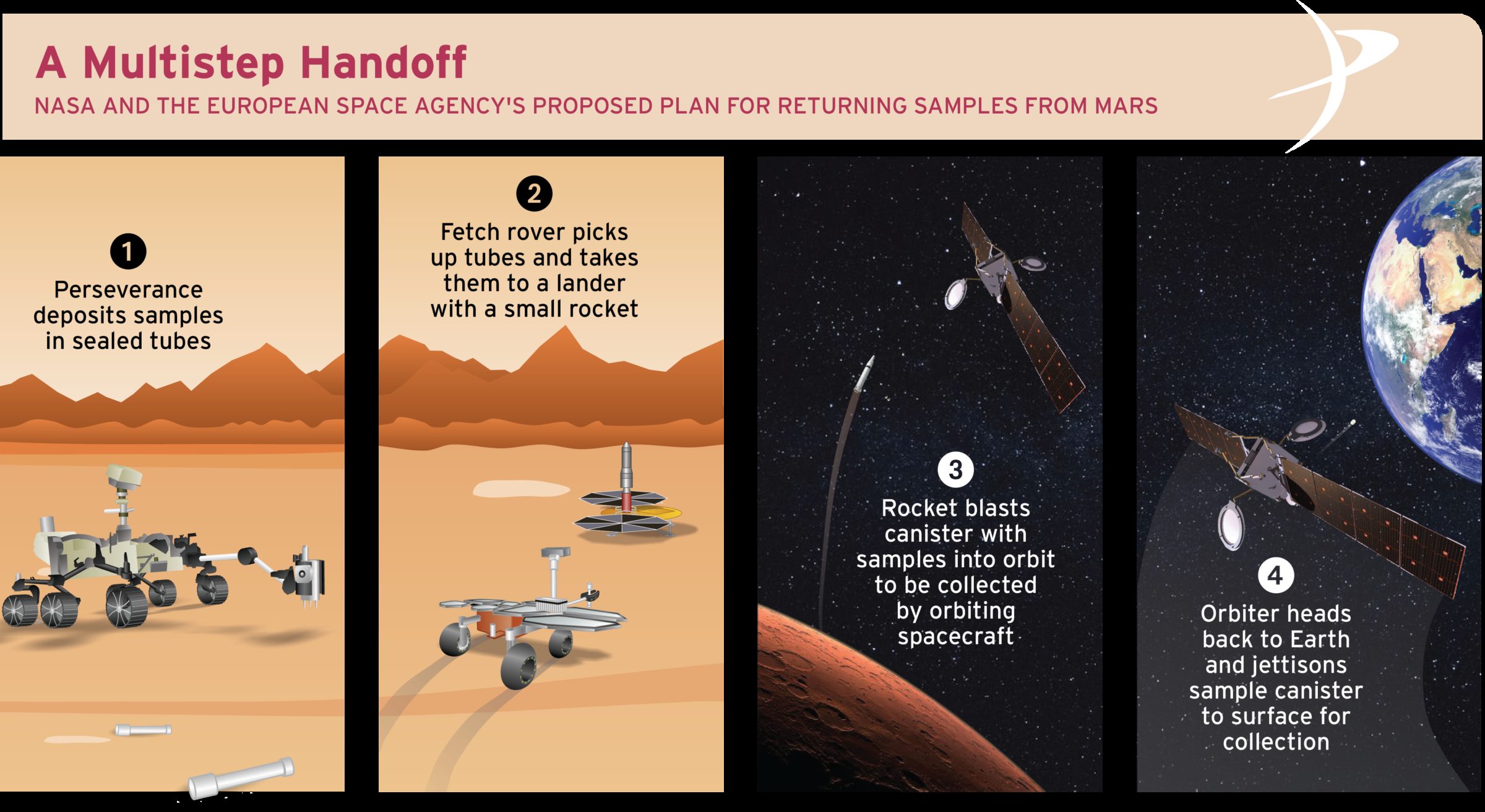
Mars Sample Return, an international project to bring Mars to Earth
Despite advances in space technology, certain science questions, including whether or not a Mars rock contains signs of ancient life, can only be answered in Earth-based laboratories.
Assuming the missions to return Perseverance’s samples to Earth get funded as planned, 2 launches would aim for Mars in 2026. The first would include a lander, fetch rover, and launch system that would land together near Perseverance in 2028. The fetch rover would collect the samples dropped by Perseverance, bring them to the lander, and place them in a sample capsule inside a rocket. (For redundancy, Perseverance can also bring samples directly to the lander.) The rocket would launch the samples into Mars orbit.
The second mission would be a Mars orbiter that would arrive in 2027. It would support telecommunications for Perseverance, the lander, and the fetch rover. Once the sample capsule was launched, the orbiter would locate and dock with it, place it into an Earth return capsule, push it to a higher Mars orbit, and then release it for its return journey to Earth. If all goes according to plan, the samples would arrive in 2031.
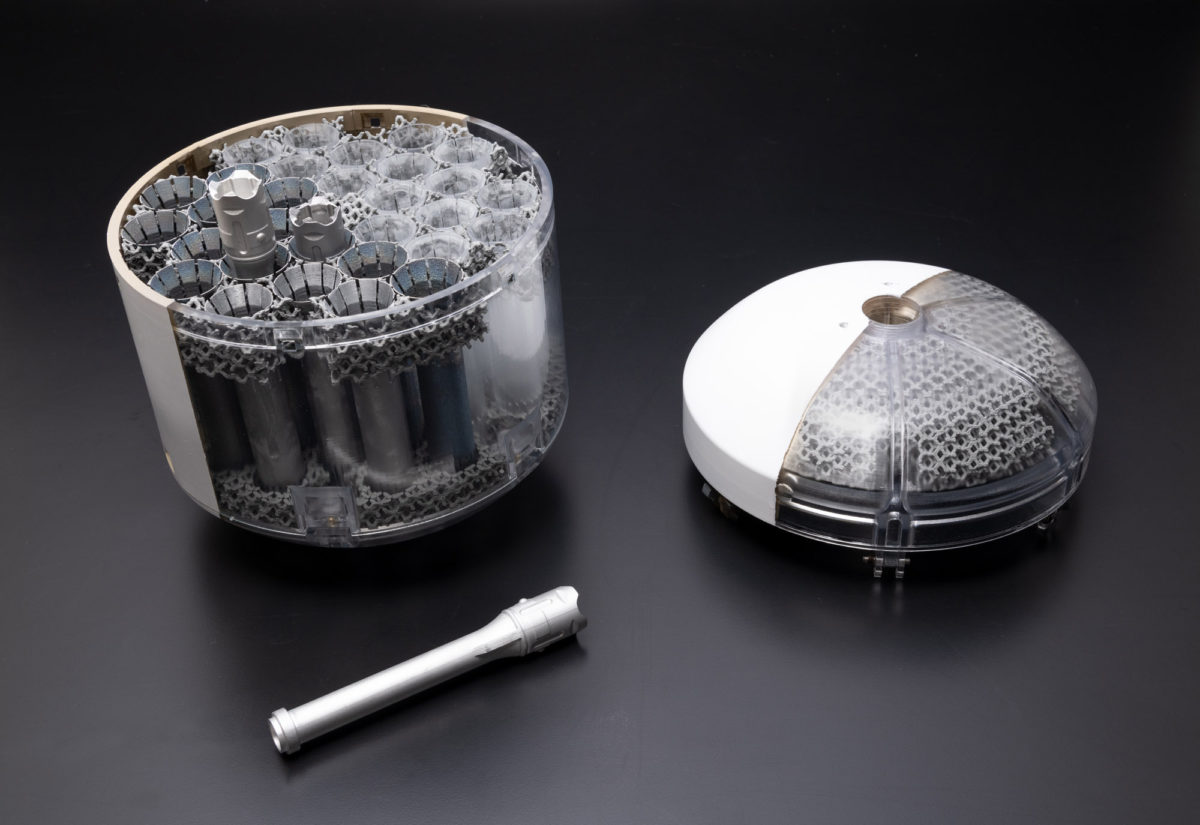
This year, we’re celebrating The Planetary Society’s 40th anniversary. Society cofounder Louis Friedman often quipped that no matter what year it was, NASA was always planning for a Mars sample return mission 20 years in the future. At long last, that horizon appears to be getting closer.
The Time is Now.
As a Planetary Defender, you’re part of our mission to decrease the risk of Earth being hit by an asteroid or comet.
Donate TodayThe Planetary Report • June Solstice
Help advance space science and exploration! Become a member of The Planetary Society and you'll receive the full PDF and print versions of The Planetary Report.


 Explore Worlds
Explore Worlds Find Life
Find Life Defend Earth
Defend Earth


